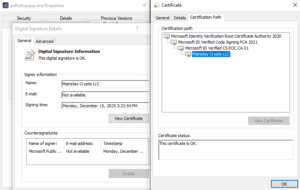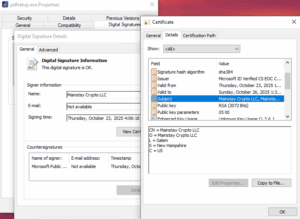Contact us
Never let your business down
Distort Ransomware Perception
Use the Deceptive Bytes Platform to turn ransomware’s evasive tactics against itself, significantly reducing the attack surface and preventing the attack before it can even begin

Our valued customers
Trusted by organizations worldwide
Your Proactive defense against ransomware
19
Ransomware attacks per second
<2 sec
Prevented in less than
Over
1,000
Evasion techniques
Unique evasion techniques anticipated and countered
$4.54M
Average
Price per successful attack
>99.9%
Prevention Rate
Using malware defenses insures high prevention rate

<1.5mb
Disk Space
Free of threats database means no unnecessary disk space is used
We will take care of the attack, so you can take care of your business
Discover how thinking differently about ransomware protection can give your organization the edge it needs in the ongoing cyber warfare.

Prevention-first security
Focus on preventing unknown ransomware attacks (by unknown actors) before they execute, reducing alert fatigue and improving response times. Deceptive Bytes preemptive technology can reduce up to 90% of alerts sent to SIEM and other systems.

Proactive & Dynamic
Real-time adjustments of deception tactics distort ransomware’s perception of the attack surface, making it appear hostile or unworthy, hindering adversary reconnaissance efforts, and preventing ransomware execution.

Enhance resilience
Traditional tools like NGAVs and EDRs rely on detecting known threats. Deceptive Bytes’ preemptive approach, neutralizing threats before they can execute. By diverting attackers and uncovering stealthy cyberattacks early, Deceptive Bytes complements your existing security stack, enhancing your overall defense posture.

Reduce false-positives
Counteracting malware evasion techniques, Deceptive Bytes generates high-fidelity alerts. Forcing threats to reveal themselves during their reconnaissance phase, significantly reducing human error, dwell time, and false positive alerts compared to traditional solutions.

Lightweight & User-mode platform
Deceptive Bytes operates in user-mode, requiring minimal system resources. Its self-managed nature eliminates the need for reboots or in-memory footprints, ensuring seamless operations and minimal operational overhead for security team.

Scalability and Integration
Operating alongside and integrating with existing security infrastructure like EDR, EPP, and XDR systems, Deceptive Bytes fortifies organnizations defense strategy without disrupting IT environment.

Testimonials that Speak Volumes
Awards & Recognitions






Latest from Our Blog
Learn what's new with us and in cyber security

SparkOnSoft campaign continues and mutates
Avi Lamay
23/12/2025
Intro Recently we on reported on SparkOnSoft which our Active Ransomware Prevention platform prevented in multiple customers’ environments worldwide. Since then we’ve noticed that not only the campaign continues, it…

Case study – extinguishing SparkOnSoft malware
Avi Lamay
26/10/2025
Intro In the past week we’ve seen a surge with new variants of a malware which our Active Ransomware Prevention platform prevented for multiple customers worldwide. The common thread between…

Winning the Cyber War Preventing Ransomware with Deceptive Solutions
Hen Lamay
10/07/2025
In today’s digital battlefield, ransomware attacks pose a significant threat to organizations worldwide. This article explores the importance of winning the cyber war by deploying preventative solutions that effectively distort…









